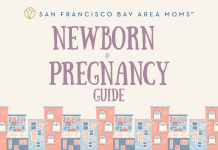
Sleep training, or sleep teaching, as I prefer to call it, includes learning how long your child can comfortably stay awake between naps and before bed by age because timing sets you and your child up for success. Sleep teaching also includes how to offer comfort when you wean your little one’s preferred way of falling asleep, whether that’s nursing to sleep, rocking to sleep, or holding a parent’s finger to fall asleep. It also considers how many night feeds your baby needs based on her age, your nursing demand, and her food source.
There isn’t a cookie-cutter solution for everyone. A mom working outside of the home has different needs than a mom working in the home. Sleep consultants are here to teach you parenting skills that will guide you as your child ages.
1) We won’t judge you.
Your sleep consultant is likely a few years ahead of you in her parenting journey. With these few years comes experience, successes, failures and things you just can’t believe you did. We know that you’re trying your best and have heard the craziest “get your kid to sleep” stories. We know that we’re all just doing the best we can and will never shame or blame you for your situation. Sister, we’ve been there.
2) You think you should naturally know how to get your little one to sleep, but it doesn’t work that way.
Is parenting innate? Are childbirth and breastfeeding innate? If they were, then you wouldn’t have spent weekends in childbirth classes and the hospital wouldn’t have had that lactation consultant on hand to help you out. Aspects of parenting are innate. The fierce love you feel for your child, your strong instinct to protect them—definitely innate. Knowing the best latching position or how to get your baby to wake up less at night—not always so innate.
3) The drive to sleep is biological, but the way we sleep is learned.
Yes, your body has a drive to sleep, but over the first few months of your child’s life, we inadvertently teach them what sleep looks like. After 2–3 months of age, your baby really does have a preferred way of falling asleep. Even if she can sometimes put herself to sleep, she’ll likely have one way that she likes to.
4) Sleep training is not synonymous with “cry it out.”
There are many different definitions of what “cry it out means.” To me, “cry it out” means to close the door to your baby’s room and not return no matter how hard or for how long he or she is crying. That is not something I practice, and if I were you, I would be hesitant to work with someone who told you that’s the first thing you should do.
5) We want more for you.
The parents of the worst sleepers are some of the most generous people I know. They are the ones who are up every hour trying to soothe their babies back to sleep in the night—so patient and generous. But I want more for them. I know it’s possible to have their 4+ month old baby sleeping 11 hours with fewer feeds in the night. You can all be happier, well-rested, and attached. Yes, your baby is incredibly important, but don’t forget that you are an important person, too.





















